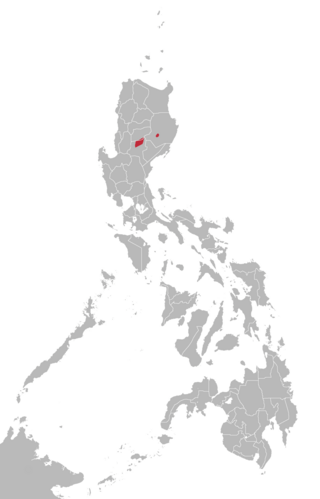
Back Tataramon na Gaddang BCL Gaddang jezik Croatian Pagsasao a Gaddang ILO Amanung Gaddang PAM Język gaddang Polish Lenga gaddang PMS Língua gaddang Portuguese Kigaddang Swahili Wikang Gaddang Tagalog
| Gaddang | |
|---|---|
| Native to | Philippines |
| Region | Luzon |
| Ethnicity | Gaddang people |
Native speakers | 30,000 (2005)[1] |
| Language codes | |
| ISO 639-3 | gad |
| Glottolog | gadd1244 |
 Areas where Gaddang language is spoken according to Ethnologue maps | |
The Gaddang language (also Cagayan) is spoken by up to 30,000 speakers (the Gaddang people) in the Philippines, particularly along the Magat and upper Cagayan rivers in the Region II [2] provinces of Nueva Vizcaya[3] and Isabela and by overseas migrants to countries in Asia, Australia, Canada, Europe, in the Middle East, United Kingdom and the United States. Most Gaddang speakers also speak Ilocano, the lingua franca of Northern Luzon, as well as Tagalog and English. Gaddang is associated with the "Christianized Gaddang" people,[4] and is closely related to the highland (non-Christian in local literature) tongues of Ga'dang with 6,000 speakers, Yogad, Cagayan Agta with less than 1,000 and Atta with 2,000 (although the Negrito Aeta and Atta are genetically unrelated to the Austronesian Gaddang), and more distantly to Ibanag, Itawis, Isneg and Malaweg.
The Gaddang tongue has been vanishing from daily and public life over the past half-century. Public and church-sponsored education was historically conducted in Spanish (or later in English), and now in Filipino/Tagalog. The Dominicans tried to replace the multitude of Cagayan-valley languages with Ibanag, and later the plantations imported Ilocanos workers in such numbers that they outnumbered the valley natives. Once significantly-Gaddang communities grew exponentially after WWII due to in-migration of Tagalog, Igorot, and other ethnicities; Gaddang is now a minority language. In the 2000 Census, Gaddang was not even an identity option for residents of Nueva Vizcaya.[5] Vocabulary and structural features of Gaddang among native Gaddang speakers have suffered as well, as usages from Ilokano and other languages affect their parole. Finally, many ethnic Gaddang have migrated to other countries, and their children are not learning the ancestral tongue.
- ^ Gaddang at Ethnologue (25th ed., 2022)

- ^ "An Introduction to Cagayan Valley Region". Cagayan Valley Region. July 30, 2012. Archived from the original on 2013-05-11.
- ^ "Homepage". Nueva Vizcaya. Archived from the original on 2013-05-12. Retrieved 2013-04-24.
- ^ "Dioscese of Bayombong". CBCP. Archived from the original on 2010-06-17. Retrieved 2013-04-24.
- ^ "Nueva Vizcaya's Annual Growth Rate at 1.97 Percent (Results from the 2000 Census of Population and Housing, NSO) | Philippine Statistics Authority". Philippine Statistics Authority. April 3, 2002. Retrieved 2020-12-14.
© MMXXIII Rich X Search. We shall prevail. All rights reserved. Rich X Search